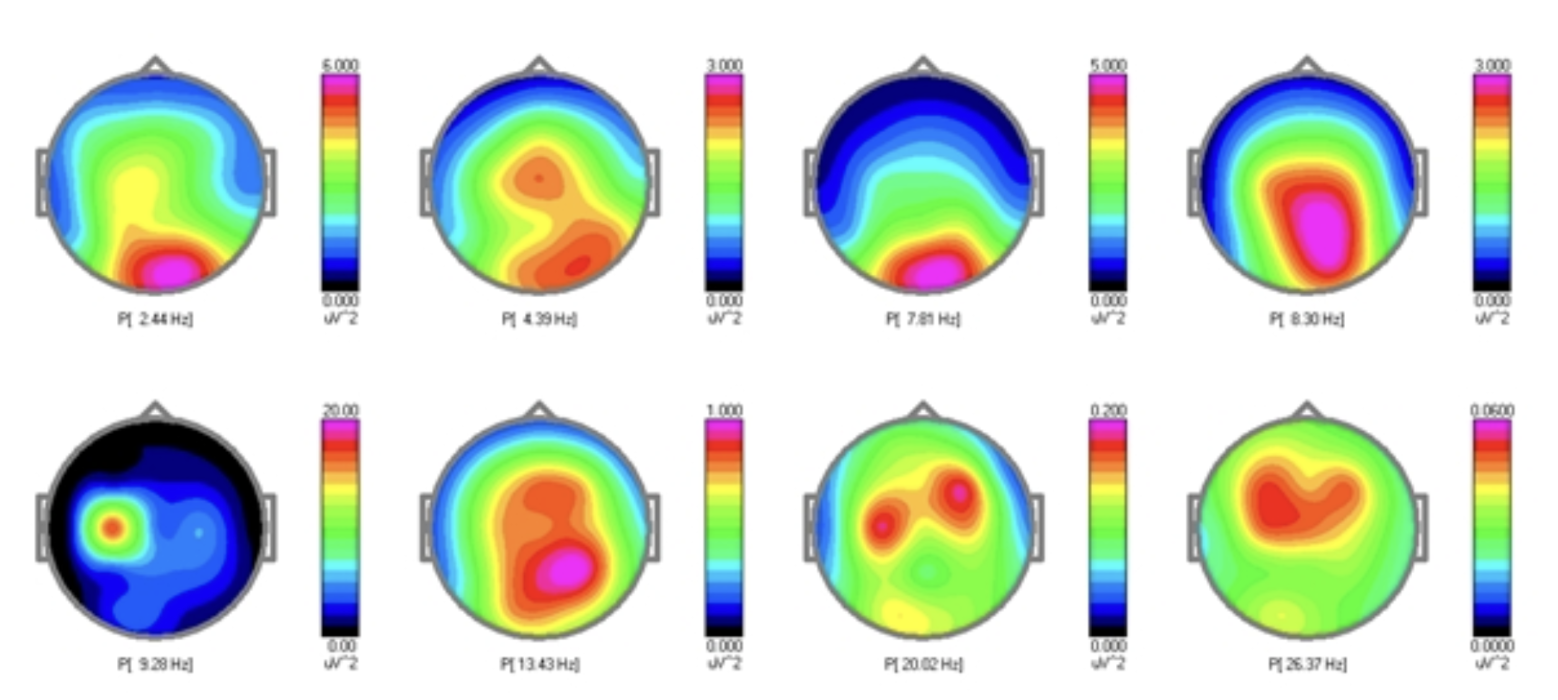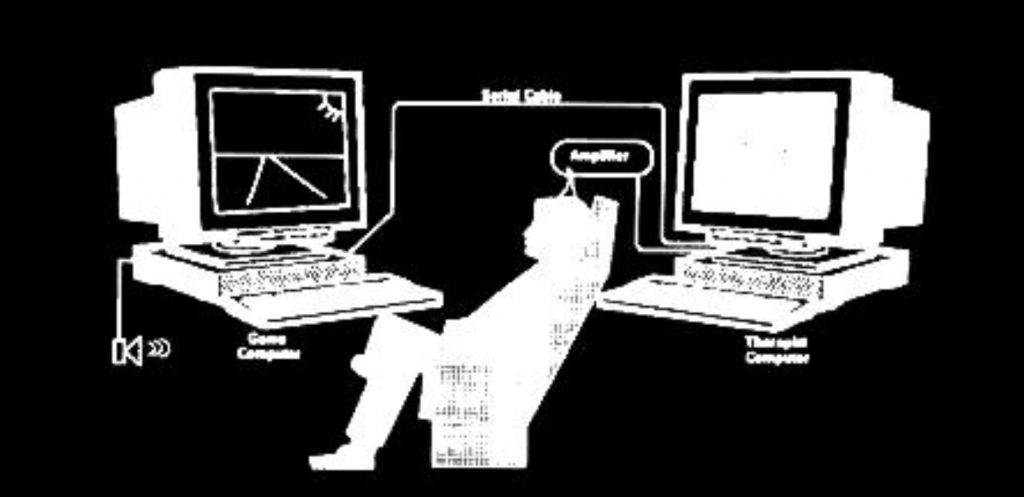SPECTRUM LEARNING'S INTERVENTION TECHNOLOGIES
Spectrum Learning has developed advanced technology that provides the most comprehensive brain based and holistic intervention programmes in the world. Our technologies used in intervention programmes have helped our client’s brain to rewire and improve in function.
brain mapping (QEEG)
WHAT IS QEEG?
The brain is the command centre for our thinking, learning, language, behaviour and emotions. Thus, problems associated with the brain should have a truly brain centric component. At Spectrum Learning, we use brain mapping or QEEG to look into the brain, which is a safe and non-invasive method. During QEEG, the client’s brain waves are measured and analysed. This reveals a lot of information about the brain, including the locations and frequencies which are active while the client is performing various tasks.
WHAT TO EXPECT
Measurement
Using state-of-the-art technology, Spectrum’s brain mapping records neural activities of the brain from at least 19 locations on the scalp. Very similar to the Electrocardiogram or EKG, which measures activities of the heart at the surface of the chest, QEEG measures activities of neurons or brain cells at the surface of the scalp from at least 19 locations simultaneously. During measurement, the client is usually tasked with:

Graphs showing EEG frequencies at each of the 19 locations measured.
Analysis
Analysis of the brain waves measured allows us to understand individual brain conditions by analysing the various brain frequencies at the different locations of the brain. This gives insight to the functionality of the brain and identify any anomalies present. By using this information, Spectrum Learning’s therapists design a suitable training protocol that is targeted and effective for brain training.

Topographic plots of brain activity based on QEEG data.
NEUROFEEDBACK
WHAT IS NEUROFEEDBACK?
Pioneered by Prof. Barry Sterman from the University of California, Los Angeles in the early 1970s, neurofeedback is known to be effective in training our brain directly by analysing our brain waves and providing the client with positive feedback during training. Initially, it was first used to treat patients with epilepsy, but has developed drastically since. Spectrum Learning’s in-house research and training, together with 25 years of experience, has developed training protocol for a variety of intervention programmes.
INSIDE A SESSION

Sensors are placed on the scalp to detect brain waves at specific locations. This is safe and non-invasive, as signals are only being measured; no signals are discharged into the brain. The brainwaves detected are amplified and converted into controls of a computer game. The trainee uses their brainwaves to control the computer game, which is triggered when the trainee produces the desired brainwave patterns determined by the specific training protocol. Gradually, over sufficient training sessions, the trainee learns to regulate brain activity on their own, leading to improved mental functions.
BENEFITS OF NEUROFEEDBACK

The early applications of neurofeedback started in the field of epilepsy. Prof. Barry Sterman was able to help many patients with epilepsy to stop having seizures with neurofeedback. This technique is so powerful that many with severe epilepsy who do not respond to medication were ‘cured’. For these patients, their epileptic seizures stopped and became seizure free even two years after they had stopped neurofeedback.
Prof. Joel Lubar, from the University of Tennessee, was the first to use neurofeedback to treat children with ADHD. He showed that neurofeedback was as effective as Ritalin medication, and it does not have the undesirable side-effects of medication. Prof. Lubar’s work spawned an enormous amount of research on the use of neurofeedback to treat ADHD.
It was soon discovered that neurofeedback also has a positive impact on our mental functioning such as learning ability, mood, sleep and behaviour. There is evident a vast amount of scientific studies and clinical observations accumulated since the early 1970s on how neurofeedback can improve our brain function.
How long does it take to see an effect?
It varies between individuals. Some report progress in just ten sessions. Others typically require 20 to 40 sessions to see visible improvements. Neurofeedback is a learning process and it takes time.
Do note that there are several factors that affect the efficacy and length of this therapy. One of them is the motivation of the trainee. Neurofeedback is not an automatic process, it requires effort of the trainee to try to alter his/her brainwaves. Usually, we see those who put in effort (to score points) tend to improve faster compared with those who are not. Those with high toxic metal accumulation in the body (which could be determined using Hair Tissue Mineral Analysis) also tends to take longer time to respond to this training. Toxic metals have great impact on one’s learning ability.
During the training session, the person appears to be engaged in games, but when it comes to studying, will this brain exercise help one to focus?
Yes. During the brain exercise one learns how to regulate his/her brainwaves. Over time, once the person starts to internalize the learning process, he/she will be able to produce the desirable brainwave patterns independently in one’s daily activities, without needing any cues from the Neurofeedback system.
How frequent will the Neurofeedback sessions be?
We would recommend at least two to three sessions per week for initial stage of training. Training can gradually reduce to 1 or twice a week when one starts to internalise this learning process and can control his/her brainwaves better.
Are there any side-effects with Neurofeedback?
No. Neurofeedback is considered a safe and non-invasive method. Compared to the conventional use of drugs and medical intervention, Neurofeedback produces effect less immediate but at the same time is safe from negative side-effects. Lack of negative side-effects is a major reason for the use of Neurofeedback, e.g. in ADHD cases where practitioners use Neurofeedback to slowly wean their patient off medication such as Ritalin etc. This is done under medical supervision.
Can this training applied to very young child?
Yes, we do work with children as young as 4 years old. To get them engaged, feedback such as video or music that are attractive to them are being played. They would be watching the video and attempting to play it. This happens quite instinctively.
HAIR TISSUE MINERAL ANALYSIS (HTMA)
WHAT IS HAIR ANALYSIS?
At Spectrum Learning, we look into bodily factors which can affect brain function such as toxic element exposure, nutritional imbalances and other biochemistry factors. Exposure to toxic elements can affect brain development and function. In the many years of our years of experience, we find that many children and adults in this region are exposed to toxic elements, which can lead to conditions such as ADHD, learning disorders, autistic symptoms and depression, among others.
Hair analysis at Spectrum Learning complements brain mapping and neurofeedback.
At Spectrum Learning, we routinely test for an elaborate range of biological factors through hair analysis that can provide insights to nutritional imbalance. Supplements are also available for purchase in-store. We provide consultation with regards to hair analysis reports to address any biological factors that are significant in healthy brain function as well.
